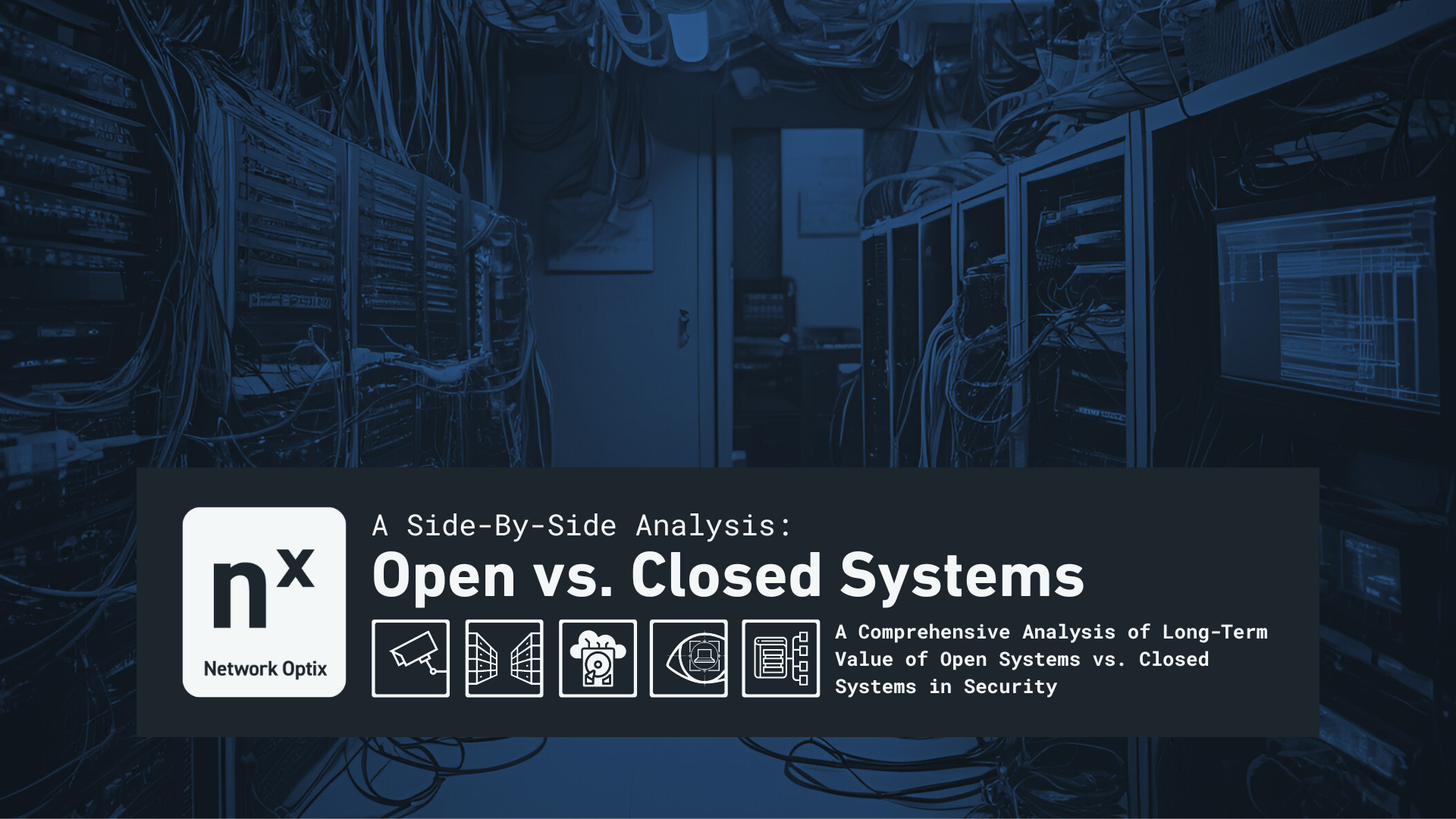The Long-Term Value of Open Systems vs. Closed Systems in Security: A Comprehensive Analysis
Security is a primary concern to any sector in possession of protected assets, particularly in managing video management systems (VMS). The debate between open and closed systems holds significant relevance as technology continues to grow and evolve. This article aims to objectively compare these approaches, highlighting their long-term benefits and differences, especially for mid-to-large organizations seeking enhanced security solutions.
Open Systems
Open systems such as Nx Witness, excel in seamlessly integrating into existing frameworks, fostering collaboration for collective improvements, and a much more customizable framework for more use cases.
Advantages of Open Systems:
- Customization and Flexibility: Open systems offer unmatched flexibility, allowing institutions to tailor solutions to fit specific needs and integrate seamlessly with any existing infrastructure. Open systems also make it drastically easier to upgrade hardware due to the simplicity of integration.
- Cost-Effectiveness: Contrary to closed systems, open systems allow owners to move between hardware manufacturers as technological innovation happens, allowing system owners to keep costs down by choosing the options and devices that best meet your requirements. Community-driven development further reduces long-term maintenance expenses.
- Innovation and Community Support: Leveraging a global community of developers, open systems benefit from constant feature enhancements and quick issue resolutions backed by robust community support.
- Transparency and Security: Transparency in open systems facilitates rigorous community-driven security audits, enabling swift identification and patching of vulnerabilities for enhanced reliability.
Closed Systems
Closed systems offered by other leading providers, emphasize user-friendly, out-of-the-box solutions tailored with highly vendor-specific features.
Characteristics of Closed Systems:
- Ease of Use: Closed systems are known for their plug-and-play simplicity, ideal for organizations with limited IT resources or technical expertise, ensuring quick deployment.
- Higher Initial Costs: Closed systems typically entail a higher setup cost compared to open systems to install the required hardware, and may incur higher long-term expenses due to licensing fees, upgrades, and potential vendor lock-in.
- Integrated Solutions: Closed systems are typically bundled with the specific hardware and software configurations necessary to work, ensure the compatibility and reliable performance with their installation processes.
- Vendor Support and Reliability: Dedicated vendor support provides assistance for maintenance, updates, and security, ensuring system reliability and operational stability. Yet while this can provide assurance, it also means reliance on the vendor's response times and priorities.
- Regulatory Compliance: Designed to meet industry standards and regulatory requirements, closed systems offer compliance assurances tailored to sector-specific needs.
Long-Term Value Comparison
Adaptability and Future-Proofing: Open systems offer superior adaptability, enabling ongoing evolution and integration with emerging technologies. This flexibility supports sustained relevance and innovation. Closed systems offer a controlled upgrade path managed by the vendor, ensuring predictability but potentially limiting agility.
Total Cost of Ownership: On top of lower initial customization costs, open systems demonstrate low long-term expenses due to seamless integration capabilities. Closed systems may incur higher ownership costs due to licensing fees, upgrades, and potential vendor lock-in.
Security and Control: Open systems prioritize transparency and community-driven security, facilitating quicker issue resolutions. Closed systems offer robust vendor-specific security measures and dedicated support, ensuring proactive maintenance but potentially slower response times for less common issues.
Innovation and Growth: Open systems foster innovation through collaborative development, facilitating integration of new technologies into security frameworks. Closed systems, while reliable, may lag in innovation due to controlled vendor-driven cycles.
End-to-End solution development and Ecosystem
An open system offers the flexibility to extend services that encompass all stages of a project or market from start to finish. It provides a wide range of integration possibilities with multiple external systems, making it capable of handling various aspects of different processes and markets as a huge and active ecosystem. This adaptability ensures that the system not only meets your specific needs but also supports general-purpose integrations effectively.
Conclusion
Choosing between open and closed systems should align with specific organizational needs, resources, and strategic objectives. For mid-to-large enterprises prioritizing scalability, adaptability, and long-term cost efficiency in security solutions, open systems such as Nx Witness VMS offer compelling advantages. Understanding the distinct long-term values empowers organizations to fortify their security frameworks and operational capabilities in a rapidly evolving technological landscape.


